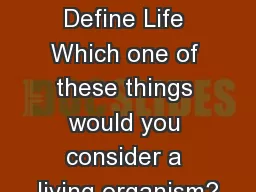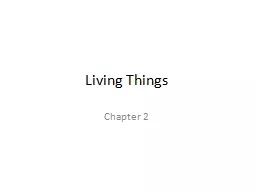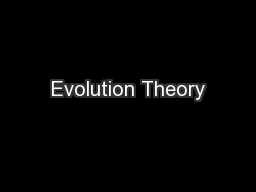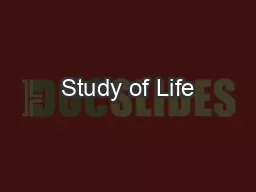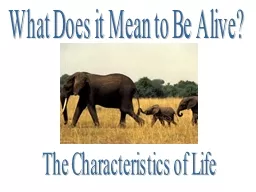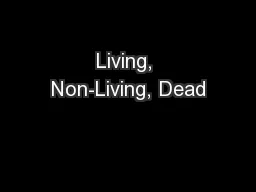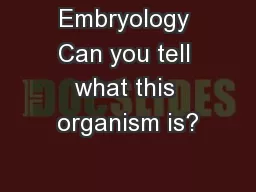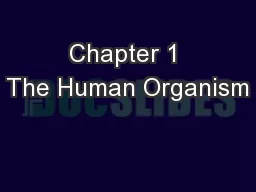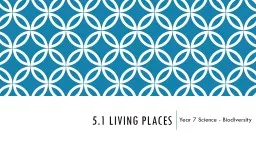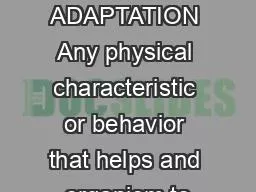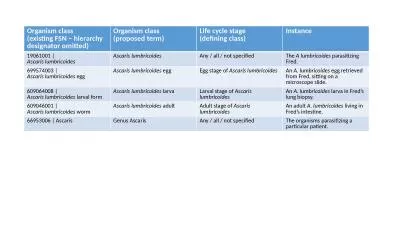PPT-How to Define Life Which one of these things would you consider a living organism?
Author : alida-meadow | Published Date : 2018-07-11
A Living Things Are Organized subatomic particles gt atoms gt molecules cells gt tissues gt organs gt organ systems Each level of organization has emergent
Presentation Embed Code
Download Presentation
Download Presentation The PPT/PDF document "How to Define Life Which one of these th..." is the property of its rightful owner. Permission is granted to download and print the materials on this website for personal, non-commercial use only, and to display it on your personal computer provided you do not modify the materials and that you retain all copyright notices contained in the materials. By downloading content from our website, you accept the terms of this agreement.
How to Define Life Which one of these things would you consider a living organism?: Transcript
Download Rules Of Document
"How to Define Life Which one of these things would you consider a living organism?"The content belongs to its owner. You may download and print it for personal use, without modification, and keep all copyright notices. By downloading, you agree to these terms.
Related Documents

